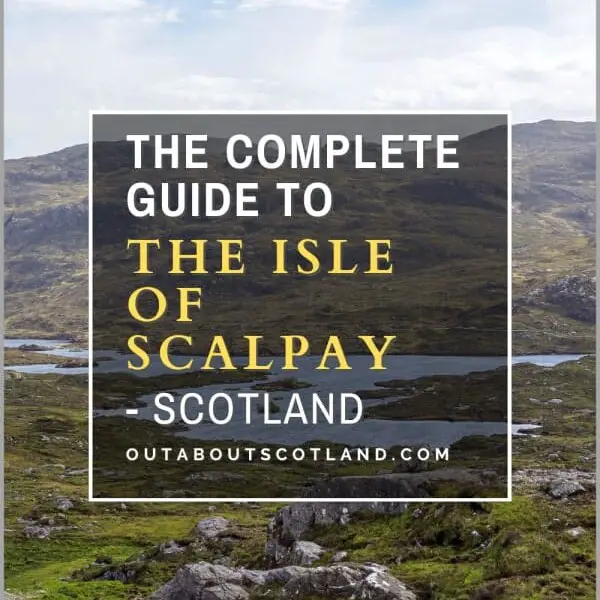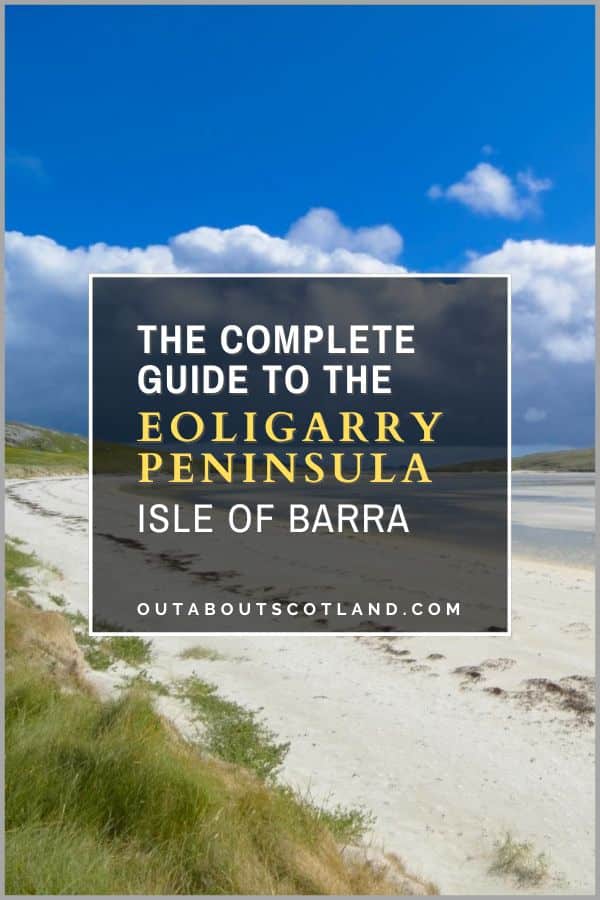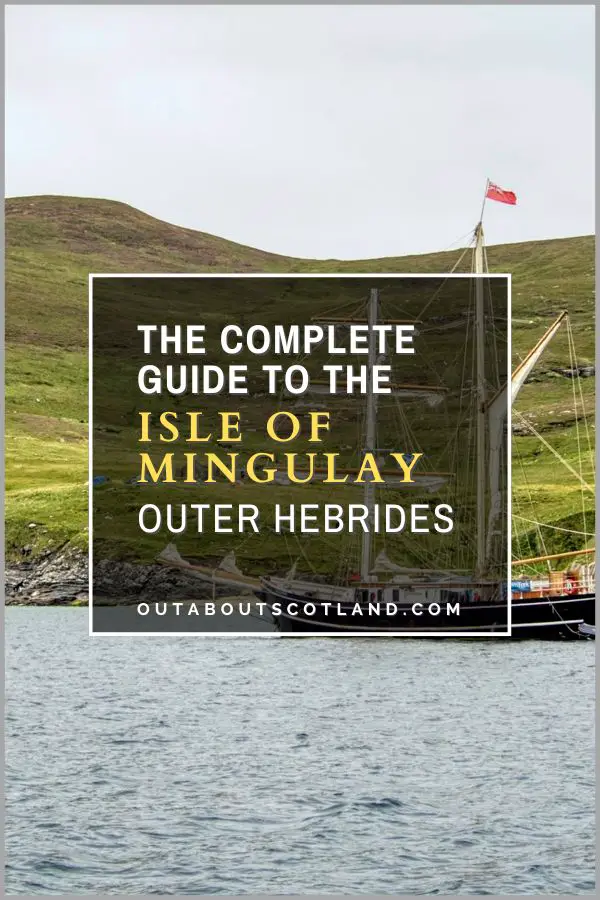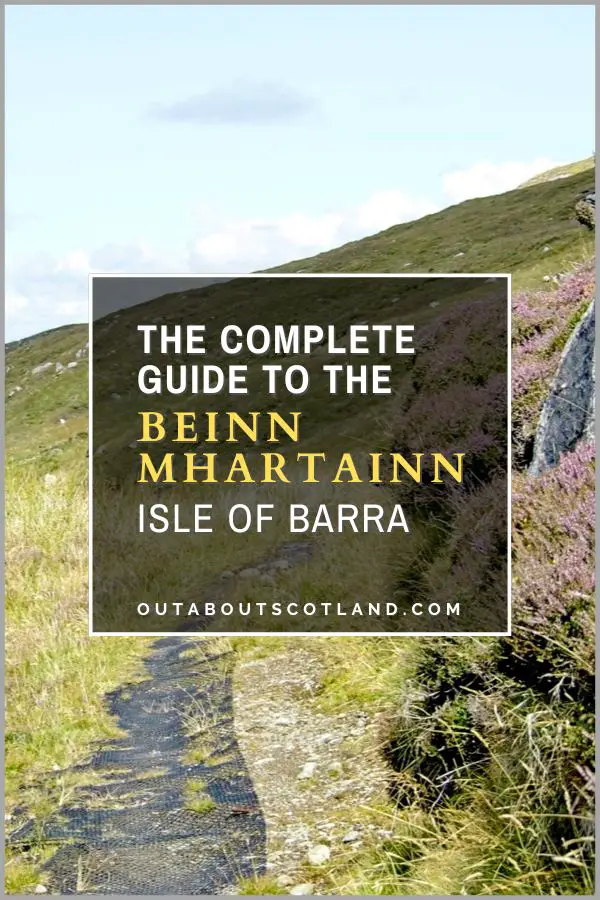The Isle of Scalpay is located on the southeast corner of Harris and Lewis. At just 2.5 square miles, Scalpay is one of the smallest isles of the Outer Hebrides, yet it has a thriving community of crofters, fishermen, and artisanal crafters.
Highlights of a visit to Scalpay include the stunning 14 miles of shoreline that’s home to seals, otters, and eagles, and the circular walks through the wild machair and moorland to the historic Eilean Glas lighthouse.
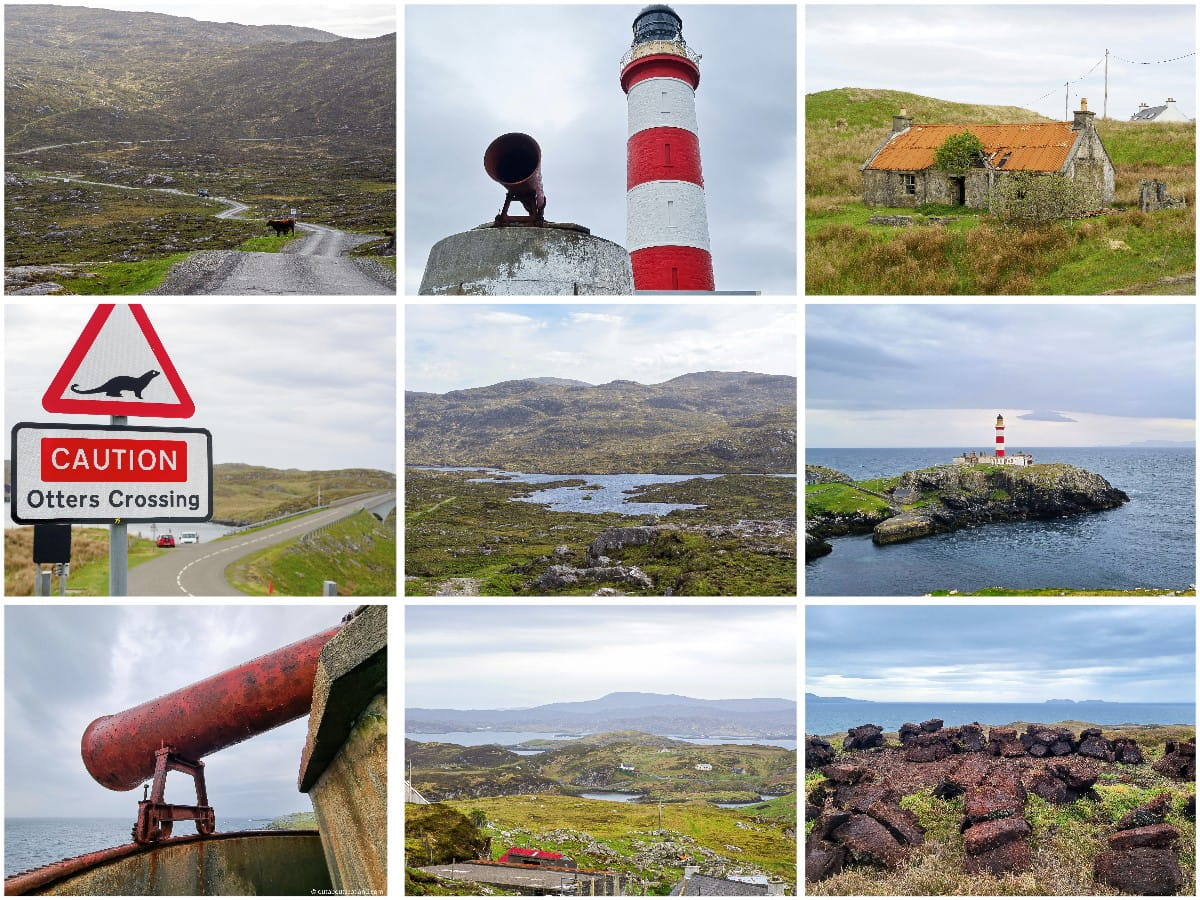
| Address: | Scalpay Bridge, Isle of Scalpay, HS4 3YA |
| Opening Hours: | The Isle of Scalpay is accessible 24/7, 365 days a year. |
| Admission Price: | The Isle of Scalpay is free to visit. |
| Parking: | There are no designated car parks on Scalpay. There are several free roadside parking spaces across the island. |
| Contact: | N/A |
| Facilities: | Scalpay has a bistro serving hot food and drink in North Harbour. Shops, cafes, and additional tourist attractions are located in Tarbert on Harris. |
| Photos: | Virtual Tour |
Overview
The Isle of Scalpay is perhaps best described as a wee hidden gem. As one of the smallest inhabited islands in the Outer Hebrides, Scalpay isn’t exactly a hotbed of tourism, but then, that’s all part of its charm.
The island is situated off the farthest southeast tip of the Isle of Harris where the closest points of the two isles are a mere 530 feet apart. Not quite within touching distance, but not far off. Even with its minuscule size, this island has a thriving population of around 300 permanent residents.
The majority of these people work either in the fishing or crafts industries, with the former concentrating on managed fish farming and the latter centred around the world-famous Harris Tweed.
Getting to Scalpay has been made easier in recent years thanks to regular Calmac ferries and the bridge, but it still requires a little prior planning. Visitors first have to get to Harris and Lewis (an accomplishment in itself) and then travel south to the sleepy village of Tarbert.
For most holidaymakers, this means taking a ferry from Ullapool on the mainland to Stornoway on Lewis and then driving 40 miles down the A859, but it’s also possible to take a direct ferry to Tarbert for those passengers who wish to sail from Uig on the Isle of Skye.
Once at Tarbert, tourists have a welcome opportunity to visit local attractions including the Harris Distillery and the Harris Tweed outlet before heading to the stunning Luskentyre Beach, but the more adventurous might consider heading east to Scalpay first.

From Main Street in Tarbert, there is a very attractive stretch of road that heads deep into Kyles Harris where the mountains of Beinn Tharsuinn and Leac Easgadail soar into the sky on one side and the waters of Caolas Scalpaigh can be seen on the other.
After a 6-mile drive you’ll find yourself on Scalpay Bridge which joins the islands of Scalpay and Harris across a narrow 530-foot divide. The bridge opened in 1997 to replace an intermittent ferry service, and it has made quite an impact on the island’s once-declining population in the intervening years.
In the 1970s Scalpay had around 600 permanent residents, but this number declined by more than half in the 90s. The introduction of the Scalpay bridge breathed new life into the island and it now has a healthy population of more than 300 residents, plus a significant number of tourists who journey there throughout the year.
Today, with tourism on the rise, many houses on Scalpay have been converted into bed and breakfasts – the majority of which are fully booked months in advance in the peak summer season.
The attraction of this wee island is evident as soon as you step foot on it, and you’ll soon discover there are quite a few things to do on Scalpay. During their stay, visitors can enjoy 14 miles of wild coastline that’s a haven for seals, eagles, and the famous Scalpay otters, as well as enjoy walks across the interior of the island where it’s possible to set off on foot and not see another person all day.
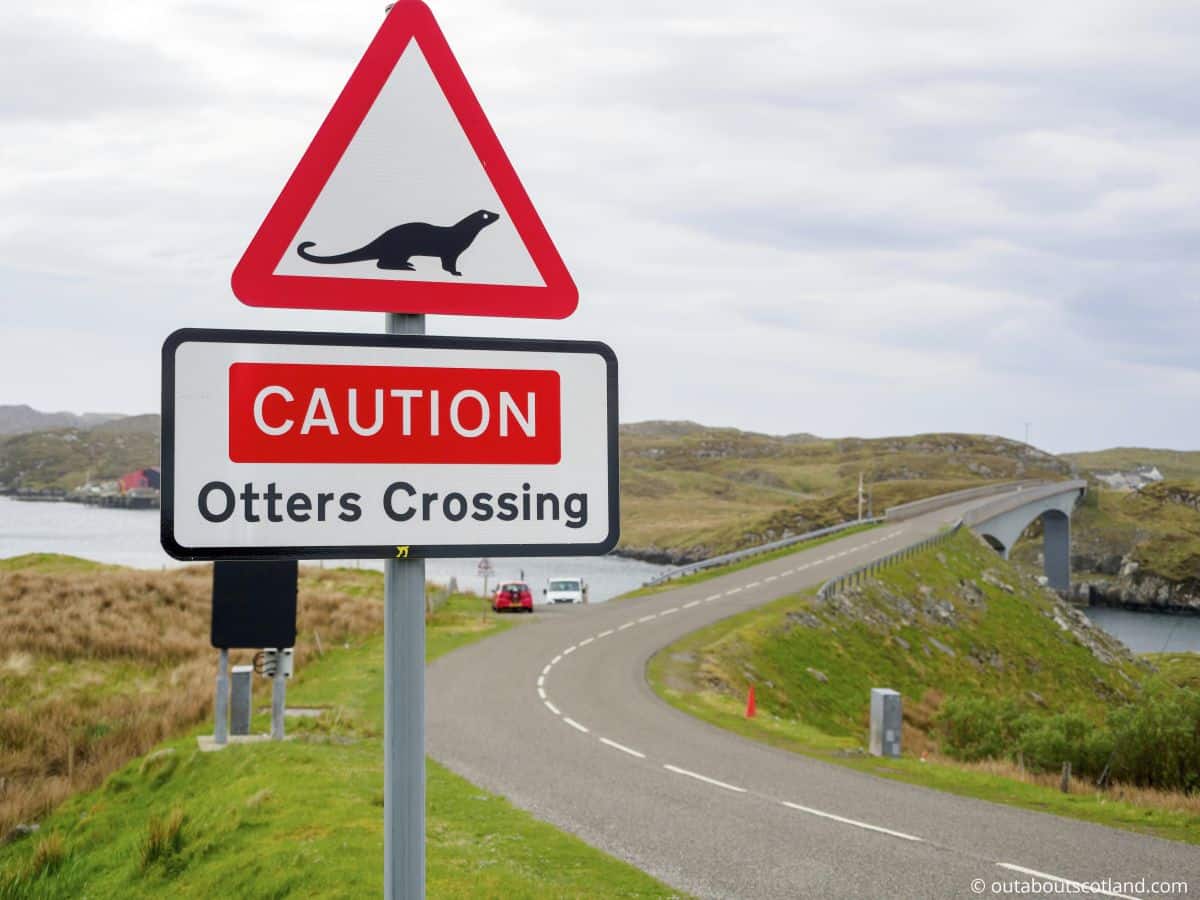
The centre of the island is peppered with lochans and stretches of boggy peat, but recently constructed footpaths allow access on gravel tracks that allow visitors to avoid squelching through sphagnum moss and prickly heather.
There’s a circular track that joins the island’s roads to its remotest extremities as well as another that allows easy access to Eilean Glas and the Isle of Scalpay lighthouse. Eilean Glas is arguably the biggest draw for most tourists, as it’s located on an incredibly scenic promontory where you can often see seals and dolphins playing in the sea.
As well as being one of Scotland’s remotest lighthouses, the Eilean Glas lighthouse was the first to be built in the Outer Hebrides, with the very first light illuminating the treacherous waters all the way back in 1789.
This initial tower was rebuilt in 1824 as the 98-foot red and white lighthouse we see today, which is now unmanned and remotely controlled by the Northern Lighthouse Board in Edinburgh. The buildings and original living quarters can be seen on a walk around, as can the enormous foghorn that’s no longer operational.

The Highlights
1: Scalpay is a small island, but it punches well above its weight when it comes to drop-dead gorgeous landscapes. The interior of Scalpay is peppered with lochans and small hills that are set in the midst of great swathes of flowering heather, while the coastline is wild, rugged, and full of marine wildlife.
2: Scalpay is a great place to take a bike. The single-track roads across the island are in good condition and present lovely views of the coastline whichever direction you take. The terrain is rather hilly though, so a reasonable amount of fitness is required, but the experience of cycling this pretty island more than makes up for the effort involved.
3: The Eilean Glas lighthouse is an interesting place to walk to, though sadly, the main building is closed to the public. However, the footpath leading to it offers a good walk through moorland to one of the most scenic viewpoints on the island.
Visiting Tips
1: As the roads on Scalpay are so narrow it’s very difficult to find anywhere to leave the car. The best place I found is the small parking area at the start of the footpath that leads to Eilean Glas lighthouse. If you have a SatNav, the postcode is HS4 3YG. To find it, follow the road signs for An Ceann a Muigh (Outend).
2: As is to be expected for such a small island, the available facilities are few and far between. That being said, there’s a bistro that serves good food in Am Baile (postcode HS4 3XU). Depending on the time of year you visit, you might find the bistro is closed, so I suggest taking your own food and drinks, as the nearest shops are located in Tarbert (approximately 5.5 miles from the Scalpay Bridge).
3: Although most people tend to head straight to Eilean Glas lighthouse there’s a much longer and more enjoyable heritage trail that circles the perimeter of the island. This walk is a wee bit tricky to navigate as it crosses boggy moorland in places. A leaflet that describes the walk in detail can be downloaded from the official Visit Outer Hebrides website.
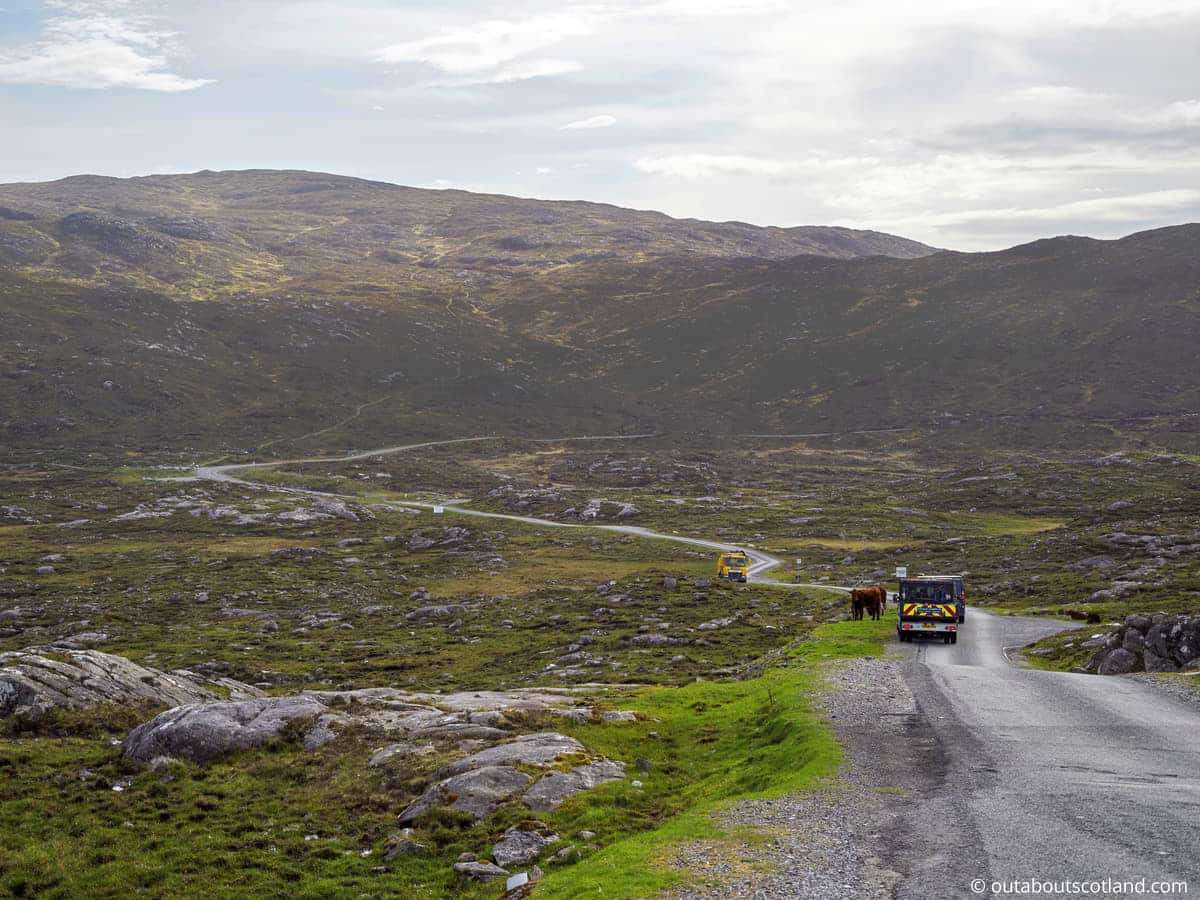
Tourist Information
The village of Tarbert sits between the divide of South and North Harris. This is an exceptionally pretty part of the island and it makes a fantastic base for a sightseeing tour – which are the two reasons why I personally booked an Airbnb there.
Aside from the obvious destinations (Luskentyre Beach and Clisham mountain spring immediately to mind), there are countless places to explore near Tarbert, but Scalpay is one of the easiest to get to.
The road heading east from Tarbert passes the southern tip of Lochannan Lacasdail which is a long north-south facing loch that sits at the foot of the North Harris mountain range.
If you have the time I recommend following the walking trail that runs along the western side of the track to Loch Shiphoirt as it’s a great way to experience the wilderness of Harris. However, if time is of the essence, then I suggest continuing on to Scalpay, which lies 3.5 miles east of Lochannan Lacasdail.
The first settlement you’ll pass on the island is the largest and it’s there where you’ll find the Harbour Bistro (a good option for food after a long walk) and the start of the heritage trail. This circular trail is 8 miles in length, takes 4-5 hours to complete, and comprises mixed terrain, with the southern half following a tarmac road and the northern half crossing rough tracks over moorland.

If you’re lacking in time, unfit, or just can’t be bothered to walk the entire trail, I recommend setting off on foot along the road from North Harbour to Kennavay, and then following the gravel path to Eilean Glas lighthouse.
This route is approximately 2 miles on the road between the two villages plus 1.5 miles on the gravel track to the lighthouse. Along the way, you’ll walk alongside Scalpay’s attractive coastline before crossing inland onto moorland and finishing at the wild and rocky coastline on the island’s southeast tip.
This route allows a good look at the main features of Scalapy on paths and roads that are well maintained and are therefore suitable for most fitness levels.
While taking a bike is an option, for my own excursion I felt the scenery was too good to miss so I chose to walk instead. The return route took 5 hours, but that included a stop at Eilean Glas and a bite to eat in the Harbour Bistro.
Once at Kennavay you’ll see a small parking area ahead of a path that leads to the promontory of Eilean Glas. This path was initially installed to service a wind turbine but it has now been extended to give tourists easy access to the lighthouse.
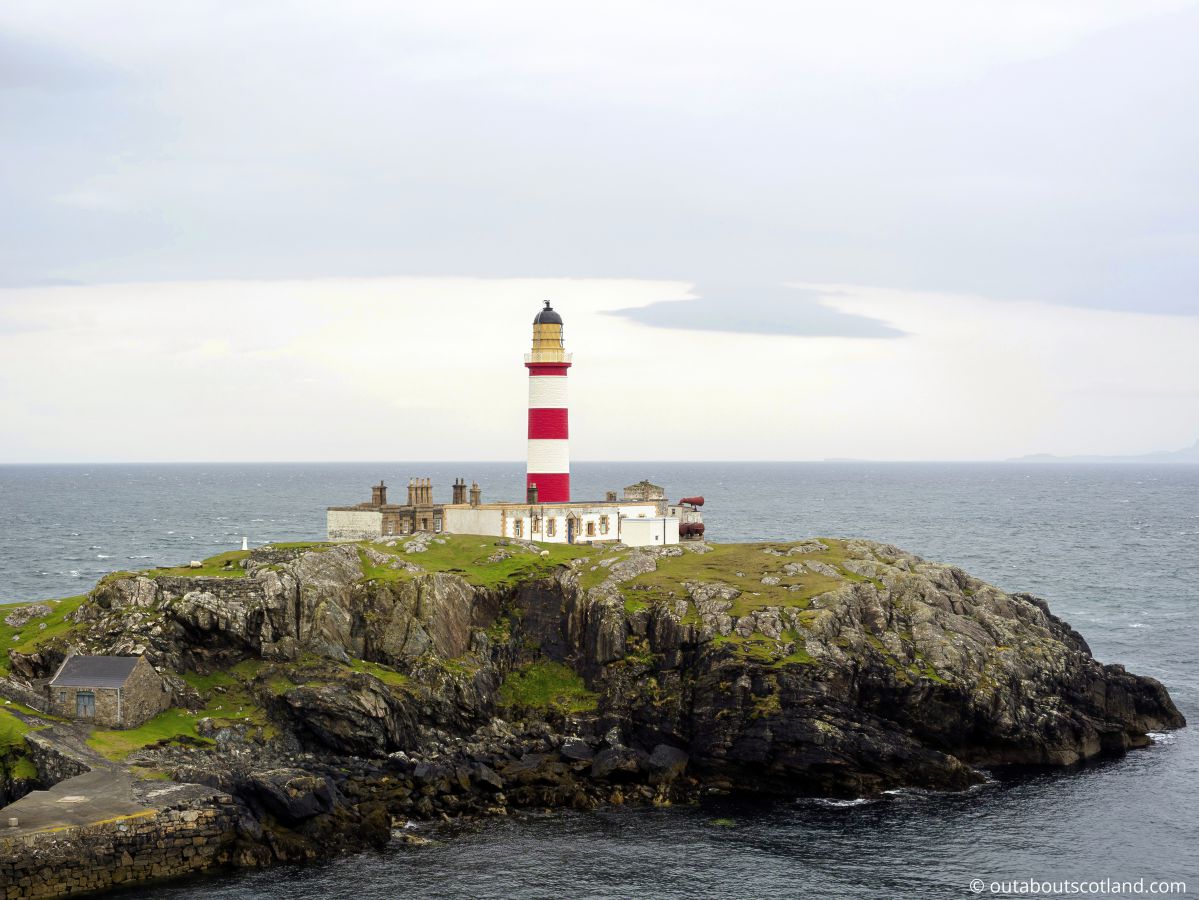
The path has some mild inclines but it’s in generally good condition, though I would have to say it is not suitable for disabled access past the turning to the turbine. Along the way, you’ll pass several places where peat has been cut (burning peat is still a favourite source of heat on the island) and lots of heather.
This heather – as attractive as it is – offers ideal living conditions for Lyme disease-carrying ticks, so you are advised to cover up your legs and tuck trousers into socks. In addition, check yourself, your children, and your dog thoroughly after walking through the heather on Scalpay. There’s a good resource about Lyme disease on the NHS website.
Once at Eilean Glas you’ll find a collection of ramshackle outbuildings that at one time were accommodation quarters for the lighthouse keeper’s family. These buildings are private property so they are locked up, as is the lighthouse which is still operational and is therefore off-limits to tourists.
Even so, you can explore the exterior of the site at your leisure, and it’s worth standing on the disused foghorn platform with a pair of binoculars (my recommended pairs) as the waters of Eilean Glas are a favourite feeding area for seals.
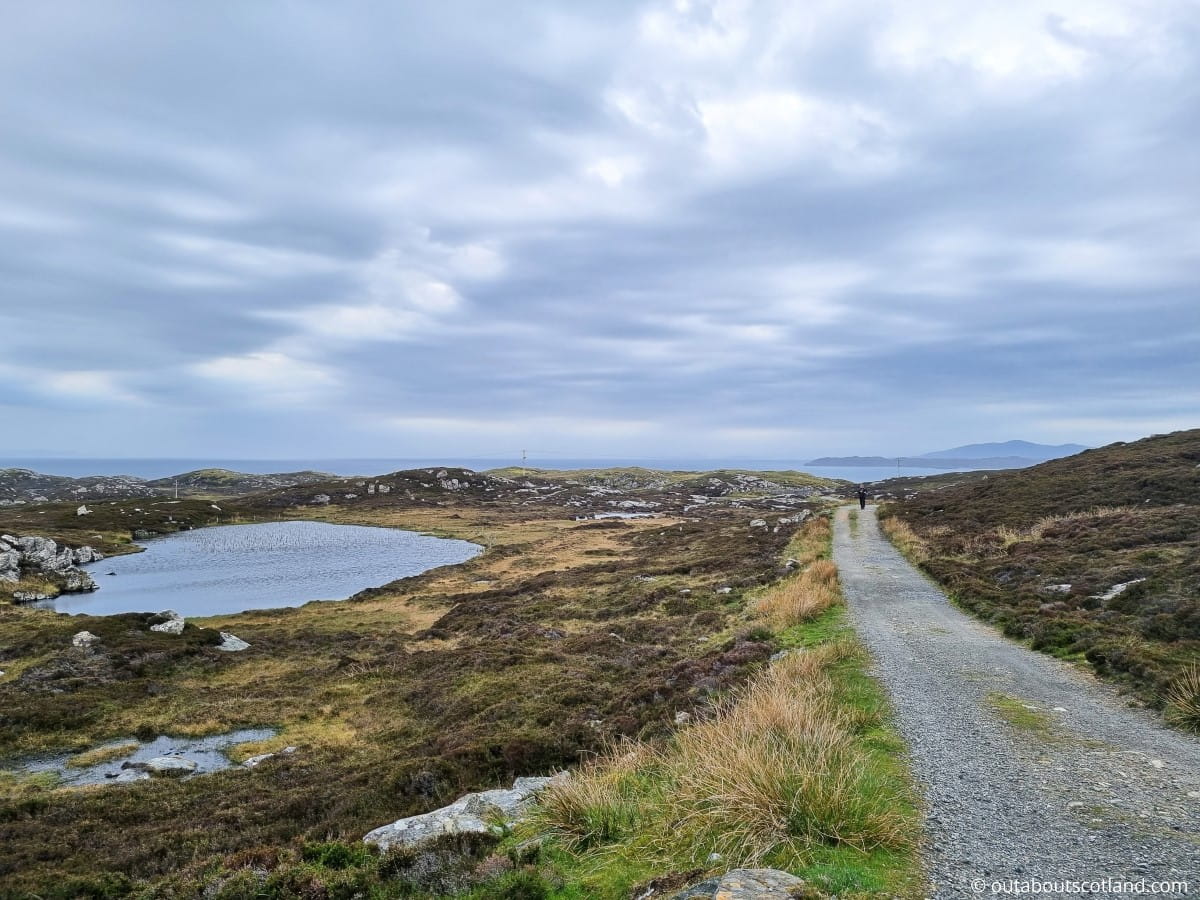
Things to Do
Lighthouse Walk: Experience the enchanting beauty of Scalpay with a walk to the Eilean Glas Lighthouse. This iconic structure offers panoramic views of the surrounding sea and islands and getting there involves a path that offers a delightful mix of moorland and lochans, providing a unique perspective of the island.
Bird Watching: Scalpay is a haven for bird enthusiasts. From the common gull to the rare golden eagle, the island’s diverse bird population is a delight to watch. Bring your binoculars (link to binocular reviews) and enjoy spotting many different types of seabirds in their natural habitat.
Fishing Trips: The surrounding waters of Scalpay are perfect for a fishing trip. Whether you’re an experienced angler or a novice, you can enjoy catching a variety of fish including mackerel, pollock, and sea trout.
Loch an Duin: This loch on the northern side of the island has rough trails surrounding it which present stunning views of the island’s rugged coastline. Keep an eye open for dolphins as you approach the sea.
Cycling: The roads on Scalpay are very quiet and are therefore great for cycling, although they’re rather hilly. That being said, the views are stunning and you can cycle from Tarbert on Harris to the Scalpay Bridge in just 45 minutes.
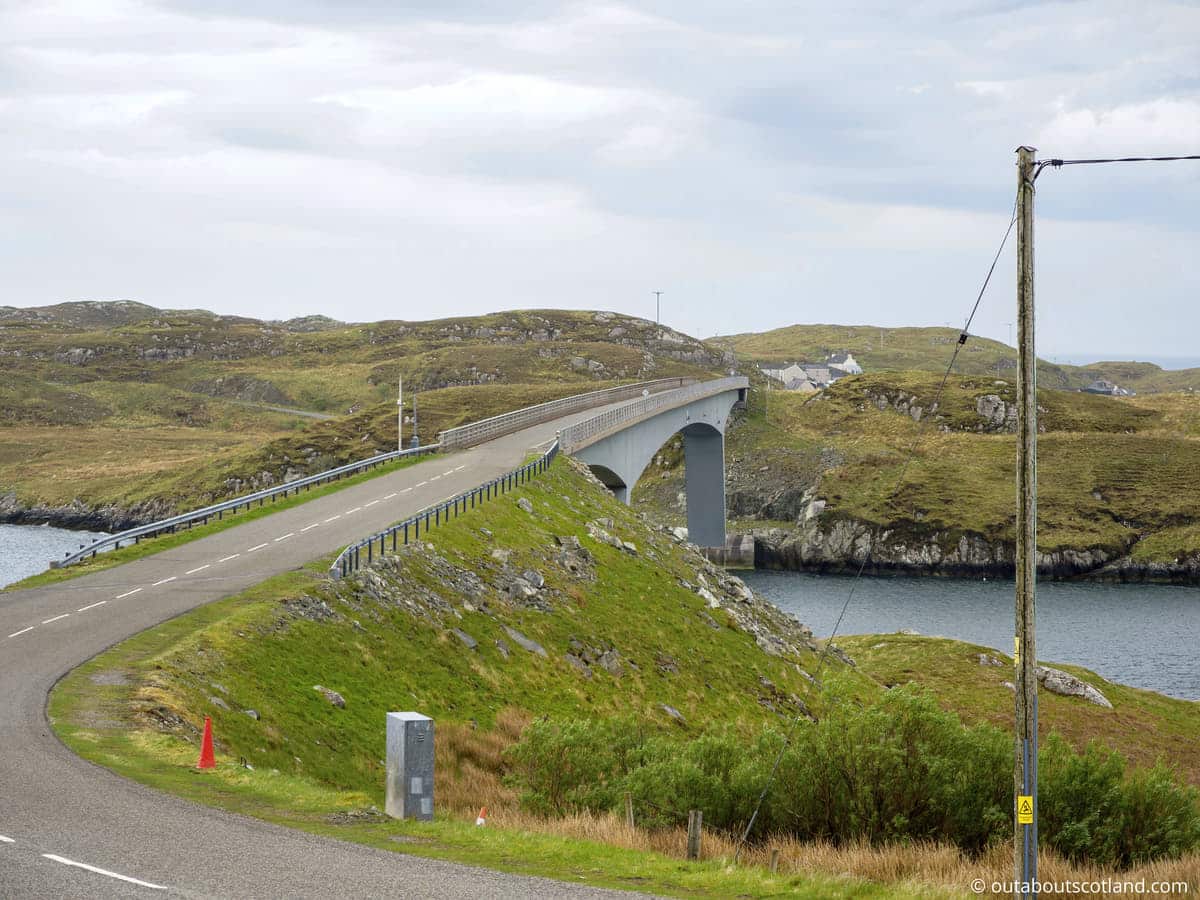
Things to Do Nearby
Harris Tweed Shop. Address: Caberfeidh, Tarbert, Isle of Harris HS3 3DJ. Distance: 5.6 miles from Scalpay Bridge.
The Harris Tweed shop in Tarbert is the main retail outlet for authentic Harris Tweed on the island. Inside, visitors will find a range of pre-made gifts and clothes made from genuine Harris Tweed as well as lengths of cloth that can be purchased in bulk.
Eilean Glas Lighthouse. Address: Isle of Scalpay, HS4 3YH. Distance: 2.3 miles from North Harbour.
This lighthouse stands on a promontory on the southeast corner of the Isle of Scalpay. Built in 1824, the current 98-foot lighthouse is one of the remotest in the United Kingdom. Though the main buildings are closed to visitors it is possible to walk around the exterior to view Glas Island as well as the original fog horn.
Loch An Duin. Distance: 0.5 miles from North Harbour.
Loch An Duin is the largest body of water on the Isle of Scalpay. There are two small islands on the northern end that are believed to be man-made and which have remnants of ancient building foundations.
Isle of Harris Distillery. Address: Tarbert, Isle of Harris, HS3 3DJ. Distance: 5.5 miles from Scalpay Bridge.
This is a lochside gin and whisky distillery situated near the ferry terminal in Tarbert on the Isle of Harris. The distillery features a cafe, gift shop and guided tours of the distillery that explain the process of gin and whisky production.
Lochannan Lacasdail. Distance: 3.6 miles from Scalpay Bridge.
An attractive loch on Harris that runs north-south between Tarbert and Scalpay. A footpath runs around the loch on its western side which presents stunning views of the body of water as well as the mountains of Harris.
Frequently Asked Questions
Does anyone live on Scalpay?
Scalpay in the Outer Hebrides (not to be confused with Scalpay near Skye) is home to a thriving population of around 300 permanent residents.
The majority of the people living on Scalpay work in the fish farming and prawn fishing industries. The island also has a number of craftspeople who work with Harris Tweed.
Are there two islands called Scalpay?
There are two islands called Scalpay in Scotland. The largest is Scalpay in the Outer Hebrides which is located off the southeast coast of Harris.
The smaller island is located in the Inner Hebrides immediately north of the Isle of Skye and south of the Isle of Raasay.
Who owns the Isle of Scalpay?
The Isle of Scalpay in the Inner Hebrides is community-owned by its 300+ permanent residents.
An English businessman bought the island in the 1980s, and in 2012 he gave it away without charge to the locals.
How do I get to the Isle of Scalpay?
The Isle of Scalpay can be visited via the Scalpay Bridge, which links Scalpay to the Isle of Harris, approximately 5 miles east of Tarbert.
Prior to the bridge’s opening in 1997, access to Scalpay was via a ferry.
Can you visit Scalpay?
Yes, it is possible to visit the Isle of Scalpay, which is located off the east coast of Harris in the Outer Hebrides. Scalpay is a small island with a population of around 300 people. It is easily accessible by car or on foot because a bridge connects it to Harris.

